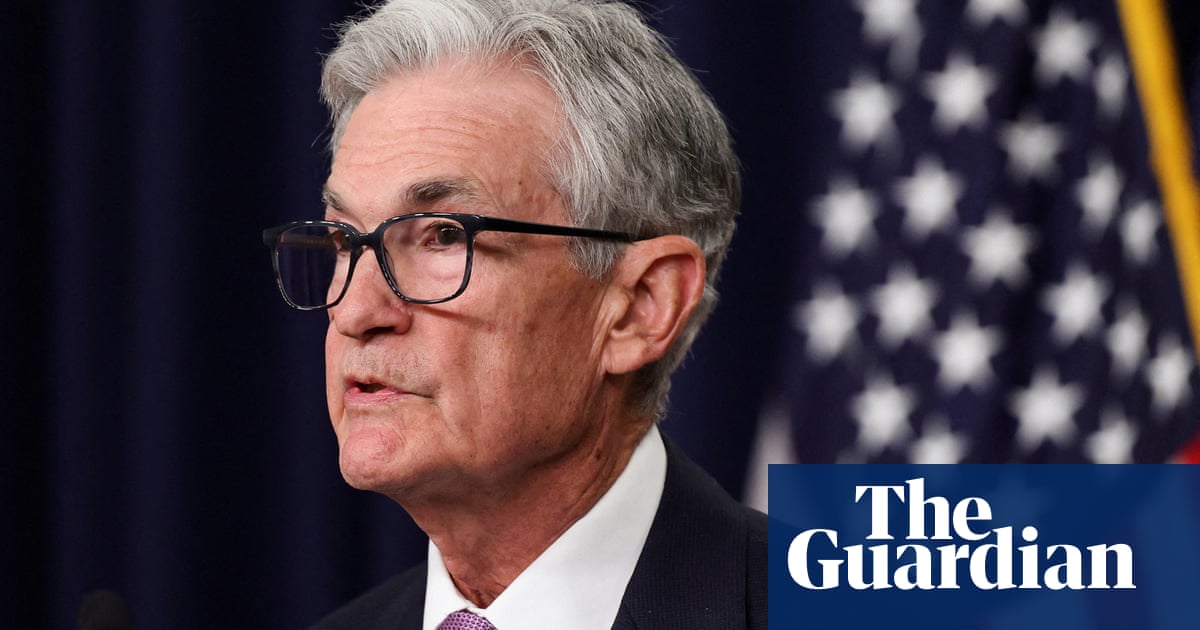” frameBorder=”0″ class=”dcr-ivsjvk”>
The US Federal Reserve lowered interest rates by a quarter point on Thursday, knocking them down for the second time in a row as inflation continues to ease and a Trump presidency hangs over the central bank.
Rates now stand at 4.5% to 4.75%, down from a decades-high level of 5.25% to 5.5%. The Fed lowered interest rates for the first time since 2020 in September, by a half point.
Late last month, the personal consumption expenditure (PCE) price index, a closely watched measure of inflation, dropped to 2.1% – close to the Fed’s inflation target rate of 2%. The main measure of inflation, the consumer price index (CPI), was 2.4% in September, the lowest it has been in three years.
In a statement, the Federal Open Market Committee (FOMC), the Fed board that sets interest rates, said: “Inflation has made progress toward the committee’s 2 percent objective but remains somewhat elevated.”
The interest rate is the Fed’s main tool in carrying out its “dual mandate”: balancing price increases with the labor market. In summer 2022, inflation hit 9.1% – the highest seen since the early 1980s. Economists worried that bringing inflation down would mean an increase in unemployment, which could lead to a recession. But unemployment has remained relatively low, at 4.1%, though job increases dramatically slowed in October.
Decreasing interest rates has meant that borrowing money will get cheaper. The mortgage rate is down 1% compared with a year ago, though it has been fluctuating in the midst of the presidential election.
Even before Donald Trump’s re-election earlier this week, questions were raised about what a second Trump term could mean for the Federal Reserve. Many see rising inflation as one of the key factors in Trump’s win on Thursday, as Americans went to the polls with the pain of rising costs on their minds. On the campaign trail, Kamala Harris had to fight back against blame directed toward the White House over inflation.
In August, before the Fed first lowered rates, Trump criticized the possibility of the Fed lowering interest rates before the election.
“It’s something they know they shouldn’t be doing,” Trump said.
Trump made comments on the campaign trail suggesting he would intervene if he disagreed with the central bank, which historically has acted independently from the White House.
Jerome Powell’s current term as Fed chair, his second since he was first appointed by Trump in 2018, will end in May 2026. Trump said in August that he would “let him serve it out”.
“Especially if I thought he was doing the right thing,” he said.
But Trump has also suggested that he should have a say in Fed decisions – threatening the central bank’s independence. At a press conference in August, Trump said: “I feel that the president should have at least a say in there.
“I made a lot of money. I was very successful. And I think I have a better instinct than, in many cases, people that would be on the Federal Reserve – or the chairman.”
In his last presidency, Trump called Fed officials “boneheads” for not cutting rates far enough. “Jay Powell and the Federal Reserve Fail Again. No ‘guts,’ no sense, no vision! A terrible communicator!” Trump said in a 2019 tweet.

